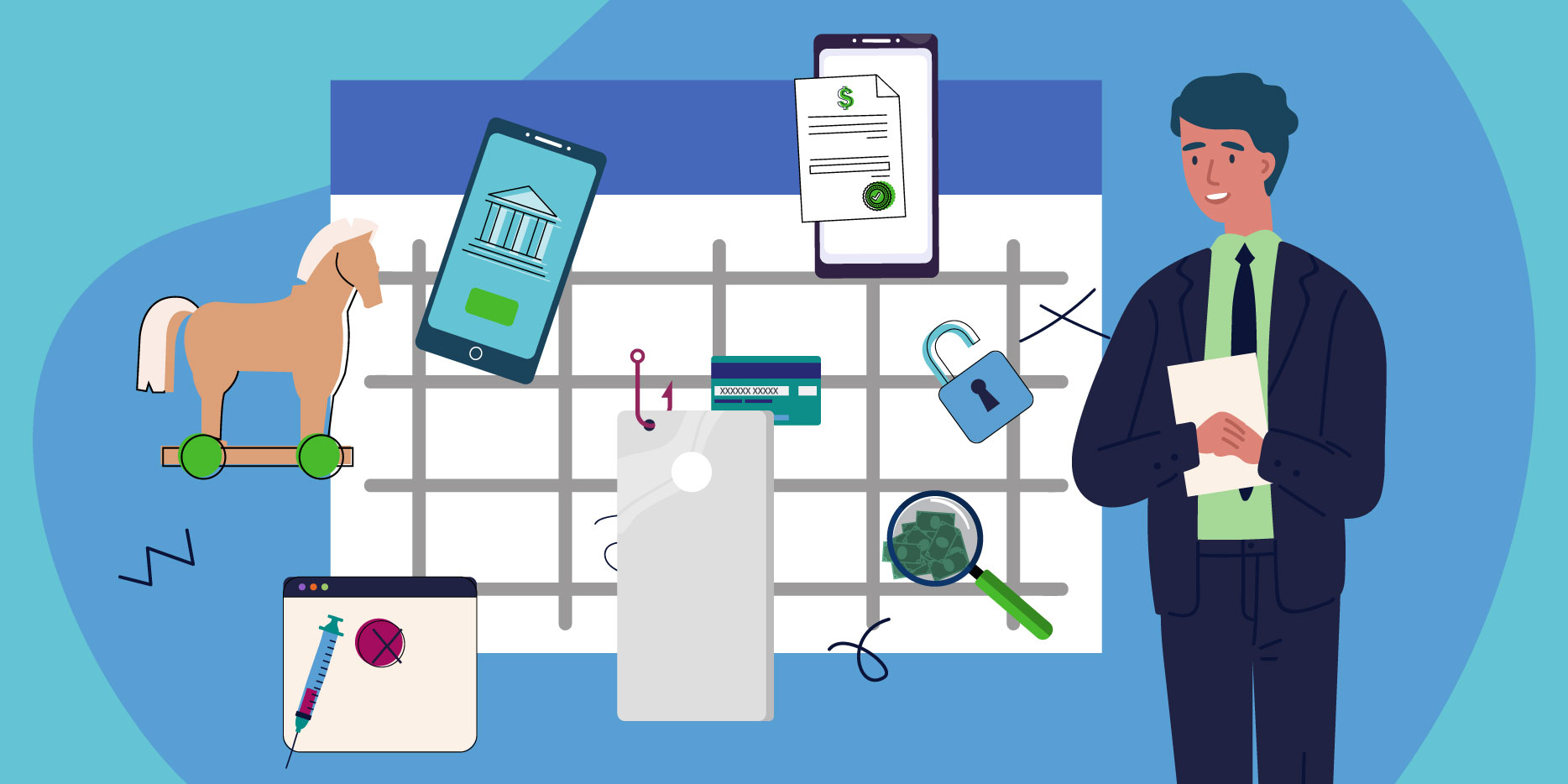
The COVID-19 pandemic provided fraudsters with numerous openings to commit financial crime over the past year. Unfortunately, even as a vaccine finally becomes available and new stimulus packages are approved, financial crime will remain a serious problem for financial institutions, merchants, businesses, and consumers. Here are my financial crime predictions for 2021.
1. Money willing mule scams & first-party fraud will rise
In early December, unemployment claims in the United States increased to 853,000, a sign that the nation’s economy is still in fragile shape. Meanwhile, millions of U.S. renters face an increased risk of eviction. Sadly, these desperate conditions both in the U.S. and in other global markets create an opening for money mule scams to increase.
By some accounts, mule activity has already risen 41% during the pandemic. Many money mule victims are unaware that they are being pulled into a scam. However, the desperate conditions brought on by the pandemic mean many people will willingly and intentionally participate in money mule fraud scams.
The same economic desperation that drives some people to deliberately take part in mule scams can also drive people to take part in first-party fraud by exploiting vulnerabilities in financial services, such as using credit cards or transfers for services and products they have no intention of paying off. It was recently reported that 60 percent of fraud losses in the financial services industry prior to the pandemic were caused by first-party fraud. Expect that figure to rise even further now.
2. Digital banking newcomers become targets
Lawmakers in the U.S. approved a $900 billion stimulus deal in December 2020 to help households struggling with unemployment. Across the pond, U.K. officials are pondering whether or not to take up a stimulus measure to prevent hundreds of thousands of families from falling into poverty. At this time, additional stimulus packages seem unlikely. This means fraudsters will target the next lowest-hanging fruit: digital banking newcomers.
When the pandemic first unfolded, millions of consumers were unable to visit a physical bank branch and had to adjust to a “new normal” routine by adopting digital banking channels for the first time. A recent report by Feedzai and PYMNTS found these shifts are going to remain in place even after the pandemic ends. Roughly 75% of respondents said they plan to maintain the banking habits they adopted during the pandemic. Unfortunately, many consumers who shifted to digital banking channels because of the pandemic to adjust to this “new normal” are still learning the ropes. This makes them easy targets for fraudsters and cybercrime activities that prey on their lack of experience. Expect fraudsters to target these customers with fake investment opportunities and authorized push payment scams, to name just a few.
3. Stimulus fraud will come to light
The U.S. government has pumped approximately $3.5 trillion USD into stimulus spending and stimulus relief, including the CARES Act and the Paycheck Protection Program (PPP). Unfortunately, the funds available through these programs did not always reach their intended recipients. A federal watchdog has already reported that billions of dollars intended for small businesses have been lost to fraud because of incorrect bank accounts, multiple loans issued to the same recipients, and loans issued to ineligible businesses.
There have also been numerous reports of individuals being charged with defrauding these COVID-19 relief programs. In one of the most egregious cases, a Florida man was able to buy a Lamborghini after obtaining $4 million on PPP relief under false pretenses. In September, the Justice Department charged 57 individuals with stealing over $175 million in PPP funds.
Consider this: these are just the cases that we know about. Even more fraud could be unsurfaced. That’s why we can expect officials to do a thorough audit of how exactly the funds that were intended for COVID-related relief were actually applied and how loans were approved. An investigation of these programs will give an idea of how much these programs lost to fraudsters.
4. Vaccine-related fraud on the horizon
The first coronavirus vaccines became available in the U.K. in early December, followed shortly by rollouts in the U.S. Both countries identified healthcare workers and nursing home residents among the first recipients. When items like the vaccine are in short supply and desperation is prevalent, scammers sense another golden opportunity.
Interpol has already issued a warning to 194 countries that criminal groups will attempt to sell fake COVID-19 vaccines or could steal real ones to sell to desperate individuals.
The global law enforcement agency said fraudsters are looking to profit off of people’s vaccine-related fears and anxiety. Fraudsters are already targeting people using emails, telemarketing scams, social media platforms, websites, and are making even door-to-door visits in some cases. Other more aggressive attacks target the vaccine’s supply chain, according to cybersecurity analysts. In the United States, the state of New York has already approved an executive order that will fine health care providers that commit vaccine fraud $1 million USD and revoke their medical licenses.
5. Expect more false-positive interruptions
The arrival of vaccines is a welcome development in the fight against the coronavirus and a sign that life could go back to “normal” someday. The good news is that we might be able to travel, eat in restaurants, and meet friends and family again in-person. The bad news is that many legitimate transactions – like purchasing plane tickets or paying for in-restaurant dining – could encounter false positive declines. Just as many organizations’ systems experienced shocks when people began working from home and shopping more frequently online, we can expect this system shock to happen again once people have the flexibility to leave their homes and travel again. Unless organizations’ data models are adjusted and able to recognize profile patterns, the road back to “normal” will be bumpier than expected.
6. New banking models will gain ground
As mentioned earlier, many banking customers will continue banking digitally. This presents an opportunity for new banking models, including challenger banks, FinTechs, and social payment platforms, to take hold. Challenger banks are attractive to customers because they offer a digital-first experience. By some accounts, the challenger bank market is on track to reach $356 million by 2025, driven by growth in the U.S., U.K., and China, to name a few.
The launch of new global payment schemes like PIX in Brazil and TME1 in Hong Kong opens the doors for new challenger banks to gain a foothold in those markets. The rise of challenger banks can also open the doors to more transactions on non-traditional formats, including social media-based payments.
Emerging financial models will need to be particularly careful of fraudsters. Since they are new and largely unfamiliar to the public, a data breach, a regulatory infraction, or a successful cyberattack could do significant harm to their reputation at a time when they are working hard to win the public’s trust.
7. Increased Focus on AI Ethics and AML Transparency
Speaking of winning trust, we expect banks and other financial services organizations will step up their efforts to demonstrate their commitment to using artificial intelligence (AI) ethically and to being transparent in their operations. This is especially relevant to how banks address money laundering activities.
The EU’s Sixth Anti-Money Laundering Directive (AML6), went into effect in December 2020 at a time when the practices of several banks and FIs in fighting money laundering have been called into question by the revelation of the FinCEN Files. Under AML6, banks will need to step up their due diligence by doing more than simply checking a box to confirm they have AML solutions in place – otherwise, bank executives or board members could face jail time if they are found in serious violation. They will need to raise the bar by building an AML program that exceeds the baseline requirements and guidelines of regulatory bodies like the Financial Action Task Force (FATF) or the Financial Conduct Authority (FCA).
AI and machine learning can help banks fulfill their AML requirements by automating tasks that have traditionally relied on manual work, such as know your customer (KYC) reviews. But banks can also improve their performance by ensuring the AI solutions they implement are transparent and monitored for potential bias – a problem even big banks can’t afford to ignore. Goldman Sachs, for example, became the subject of an investigation in 2019 when consumers complained that its Apple Cards offered female applicants lower lines of credit compared to male customers. Banks will need to take steps to ensure that any AI implemented at their bank adheres to strong ethical standards.
Buckle up! The year 2021 has plenty of twists and turns ahead.
Want to learn more about financial crime trends? Watch our webinar on-demand Financial Crime Webinar Q4 2020: How Covid Impacted Consumers & Fraud.
Share this article:
Pedro Barata
Pedro Barata is the Chief Product Officer at Feedzai, overseeing Product Management, Engineering and Design. He has worked with various global financial services companies and is passionate about building products that deliver tangible outcomes to Feedzai's clients and make the world a safer place.
Related Posts
0 Comments5 Minutes
A Global Elder Fraud Epidemic: Exclusive Feedzai Research
Digital connections have become lifelines for our senior citizens. But the digital realm,…
0 Comments10 Minutes
A New Account Fraud Solution to Block Fraud at Stage 1
The account opening stage is arguably the most crucial point in a bank's customer…
0 Comments16 Minutes
Using Fraud Analytics to Stay Ahead of Criminals
As if the battle against fraud wasn’t complicated enough, merchants have to contend with…


